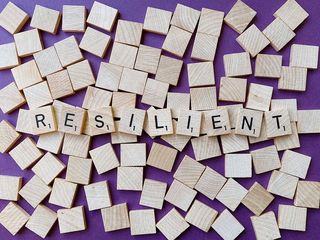The Relationship with Yourself
Notes on self-confidence and authenticity.
Posted by Jennifer Guttman Psy.D. on Jun 27, 2019
In my over 20 years in private practice, I’ve witnessed an alarming rate of low self- esteem among my clients which is linked to a critical self-concept. In fact, it’s estimated that roughly 85% of people worldwide (adults and adolescents) have low self-esteem. Low self-esteem has been linked to violent behavior, school dropout rates, teenage pregnancy, suicide, and low academic achievement. The World Health Organization (WHO) in reports that more deaths are caused by suicide every year than homicide or war.
Understanding How Self-Concept Affects You
Self-concept was described by Baumeister in 1999 as a person’s understanding or belief about their personal attributes. These beliefs affect how they interact with the outside world. A person’s self-confidence, as well as other attributes such as self-worth, self-love and self-respect, are impacted by how intact our self-concept is. An impaired self-concept adversely interferes with a person’s ability to find happiness, and over 80% of my clients are struggling with feeling some level of unhappiness in their lives. Taken together, the relationship we have with our self-concept can invariably prevent our ability to achieve our overall desired level of satisfaction and happiness in our lives.
Abraham Maslow, an American psychologist, places self-actualization at the pinnacle of emotional adaptive achievement in his hierarchy of needs. He includes “esteem” needs within the hierarchy. In his view, “esteem” needs include the need and aptitude for self-confidence to continue on a path towards self-actualization. He notes that when self-confidence is driven by notoriety from outside sources it will be fragile. However, when the feeling is cultivated from within, it will feel more deserving, and thus, be regarded by the “self” as of higher value.
How Childhood Influences Our Self-Confidence
Self-confidence, or lack thereof, develops in childhood and adolescence through a variety of channels. Children who are listened to and whose accomplishments and mistakes are both recognized and accepted, tend to evolve into more confident adults. If children are indoctrinated and experience “perfect” child syndrome for their accomplishments or harsh criticism for the mistakes, they will most likely lack self-esteem as adults. Of course, there is also the co-occurring impact of school success or failure as well as positive or negative social experiences that can adversely hinder self-confidence during childhood and adolescence. These positive or negative academic and social experiences may bring about self-doubt or conversely boost positive self-image. For example, by age 17, 78% of girls are unhappy with their bodies, and more than 90% admit to feeling pressure to look a certain way or would change something about how they look if they could. 75% of girls with low self-esteem reported engaging in negative activities like cutting, bullying, smoking, drinking, or disordered eating. This compares to 25% of girls with high self-esteem. 59% of U.S. teens have been bullied or harassed online, and a similar share says it’s a major problem for people their age. Among high school students, 44% of girls and 15% of guys are attempting to lose weight.
Identifying the Symptoms of Low Self-Esteem
The first step in dealing with low self-esteem and self-confidence is to critically assess symptoms and behavioral patterns that feel abnormal to you and may indicate you’re suffering from low self-confidence:
– Have you started to notice or have been told that you’re sensitive to criticism?
– Do you feel socially avoidant and have developed a pattern of isolating yourself in social situations?
– Are you consistently having negative thoughts about yourself or your abilities?
– Do you find it difficult to challenge and assert yourself?
– Do you have trouble with eye contact or a confident posture
Taking Action to Raise Your Self-Concept
If you feel any of the above are accurate assessments and applicable to you, here are some suggested actions you can take as a change agent to improve your self-esteem:
– Practice verbally asserting yourself in ways that don’t feel too intimidating with friends, family members or co-workers
– Take an inventory of your strengths and write them down
– Try to do something new or challenging either daily or weekly
– Actively self-praise daily
– Be honest about realistic goals so you reduce the risk of disappointing yourself
– Practice confident posture: good eye contact, smiling and standing straight
– Think of one thing you’re proud of each day to improve and emphasize positivity
– Stop comparing or contrasting yourself to others; focus on self-improvement, not on being better than someone else. Self-confidence comes from within, not from being “ahead” of another person or receiving respect from someone else.
Try these strategies to improve your self-confidence and improve your relationship with yourself. I have found them to be helpful both with adults and adolescents who have self-esteem challenges as well as parents who are dealing with pre-teens who have low self-esteem. However, if you’re still struggling after consistently trying these for a few months, then seek professional mental health services as a next step.
Article Link: The Relationship with Yourself
















